Monster trees – the redwoods.
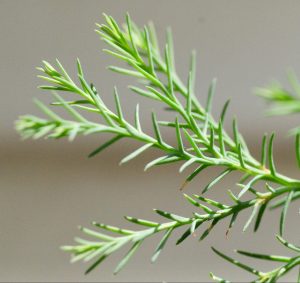
The redwoods are special trees because of their size and age. There are three species :
- the coastal redwood (Sequoia sempervirens ),
- the giant sequoia / redwood (Sequoiadendron giganteum), and
- the dawn redwood (Metasequoia glyptostroboides)
They are the most massive trees on earth. The coastal redwoods are the tallest of the three species. The largest was measured to have a height of some 379 feet (115.5M). Not only are these trees large but they are also impressive because of their longevity, a thousand years is not unusual but dendrochronology has aged one specimen at over 2500 years. The coastal and the giant redwoods are found naturally on the pacific coast regions of California and Oregon, though specimens trees are found in the U.K. and many other countries [and plantations have been established in New Zealand].
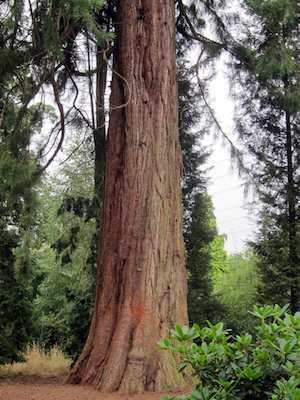 Redwood timber was highly prized due to its fire resistance and this lead to the extensive felling of redwood stands from the early nineteenth century onwards. In consequence, their distribution is much reduced and limited to ‘pockets’ of old growth (in National Parks) along the coast. Recent years have seen episodes of drought (thought to be associated with climate change), these have exposed the trees to water stress which has weakened their resistance to pests and pathogens.
Redwood timber was highly prized due to its fire resistance and this lead to the extensive felling of redwood stands from the early nineteenth century onwards. In consequence, their distribution is much reduced and limited to ‘pockets’ of old growth (in National Parks) along the coast. Recent years have seen episodes of drought (thought to be associated with climate change), these have exposed the trees to water stress which has weakened their resistance to pests and pathogens.
The supply of water to the treetop leaves of a coastal redwood is a major factor in determining the maximum height of a tree. The distance from roots to leaves is a major problem in terms of water transport. The treetop leaves operate under some degree of water stress (due to higher light intensities, drier air and higher temperatures). These factors constrain certain physiological functions, such as cell elongation and photosynthesis, which in turn limit growth in height. The maximal attainable height has been calculated to be 122M.
It is thought that the trees can reduce some of the water stress by the absorption of moisture through the leaf surfaces. Summer fogs occur in the coastal regions and it is noteworthy that in drier regions of their distribution the trees are shorter. It is also interesting that there is a difference between the leaves at the top of the tree and those lower down. 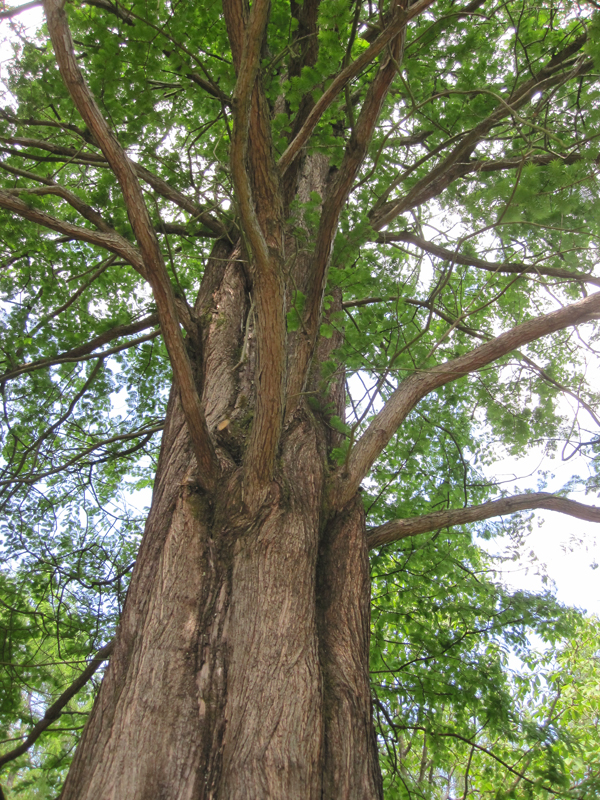 Those at the top are small, thick, and fused to the vertical stem axis; this fusion of leaf and stem creates a relatively large volume of tissue and intercellular space that can store water. The leaves in the lower part of the crown by comparison are large, flat and horizontal to the stem axis.
Those at the top are small, thick, and fused to the vertical stem axis; this fusion of leaf and stem creates a relatively large volume of tissue and intercellular space that can store water. The leaves in the lower part of the crown by comparison are large, flat and horizontal to the stem axis.
The giant sequoias are shorter than the coastal redwoods but what they ‘lack’ in height, they make up for in mass. They can outweigh giant redwoods substantially. General Sherman, a giant sequoia, can claim the title ‘largest tree in the world’ on the grounds of mass / volume. It stands some 274 feet tall and its circumference at its base is 100 feet plus. The species was originally named (in 1853) Wellingtonia gigantea, but the name Wellingtonia had already been used for a completely unrelated plant. It was renamed several times, and finally called Sequoiadendron in 1939.
The dawn redwood is native to China. Like the Coastal Redwood and the Giant Sequoia, it belongs to the Sequoioideae, in the Cypress family. It is the only living member of its genus Metasequoia, though three fossil species are known. It is sometimes referred to as a ‘living fossil’ as it appears to be basically unchanged for millions of years.
Below left, a recently germinated redwood seedling, and right seedlings about six month post germination
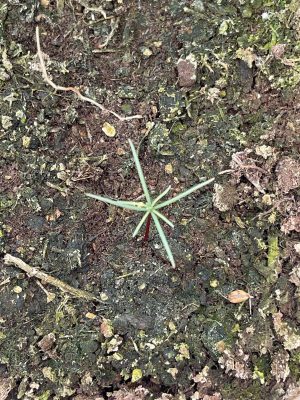
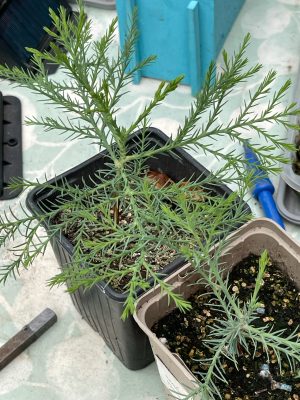
Comments are closed for this post.

If anyone in the north of England wants to see giant redwood, there’s a hidden little community-maintained park in Sheffield, worth a walk round: https://en.wikipedia.org/wiki/Whinfell_Quarry_Garden
JC
6 August, 2021